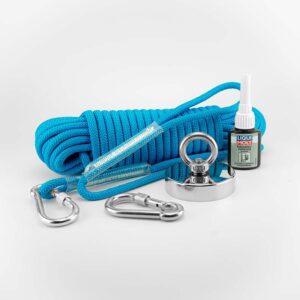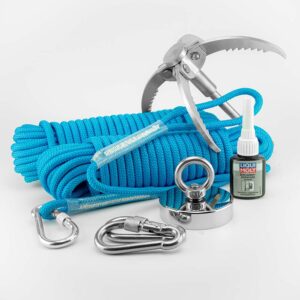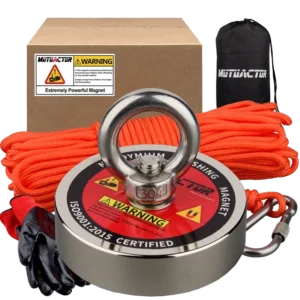Our magnet fishing kits:
WARNING!
The magnets should be kept away from all electronics and items with chips in them. This includes small items like USB drives, car keys, bank cards, etc.

These magnets are extremely strong. We recommend that children/teenagers under 18 do not handle them. Getting caught between one of our magnets and a metal object can have very unpleasant consequences.

People with pacemakers are strongly advised not to handle the magnets, as it is associated with direct life-threatening danger! The magnets must be kept away from all electronics and items with chips inside.
Guide how to Magnet Fishing:
What Is Magnet Fishing?
Imagine casting a line into the water, not knowing what you might pull up—only it’s not fish you’re after, but treasures hidden beneath the surface! Magnet fishing is an incredibly rewarding hobby that allows you to explore local waterways while helping to clean them up. Using a strong neodymium magnet tied to a rope, enthusiasts of all ages throw their lines into lakes, rivers, and canals, eagerly anticipating what they might find.
This isn’t just about the thrill of discovery; it’s about making a positive impact. Every piece of metal you retrieve, from old coins and lost jewelry to vintage tools and even historical artifacts, helps clear our waters of debris, benefiting the environment. It’s a simple hobby to pick up, requiring just a magnet, a rope, and a spirit of adventure. Whether you’re a seasoned outdoor lover or just looking for a new family activity, magnet fishing offers a unique blend of excitement and conservation.
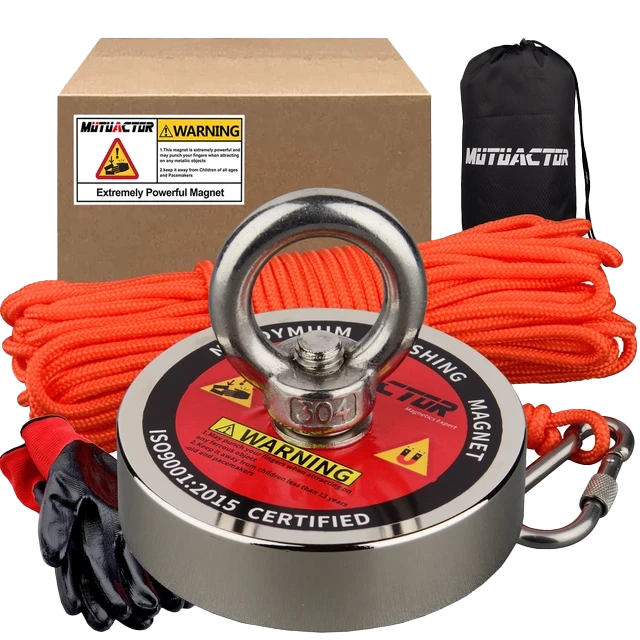
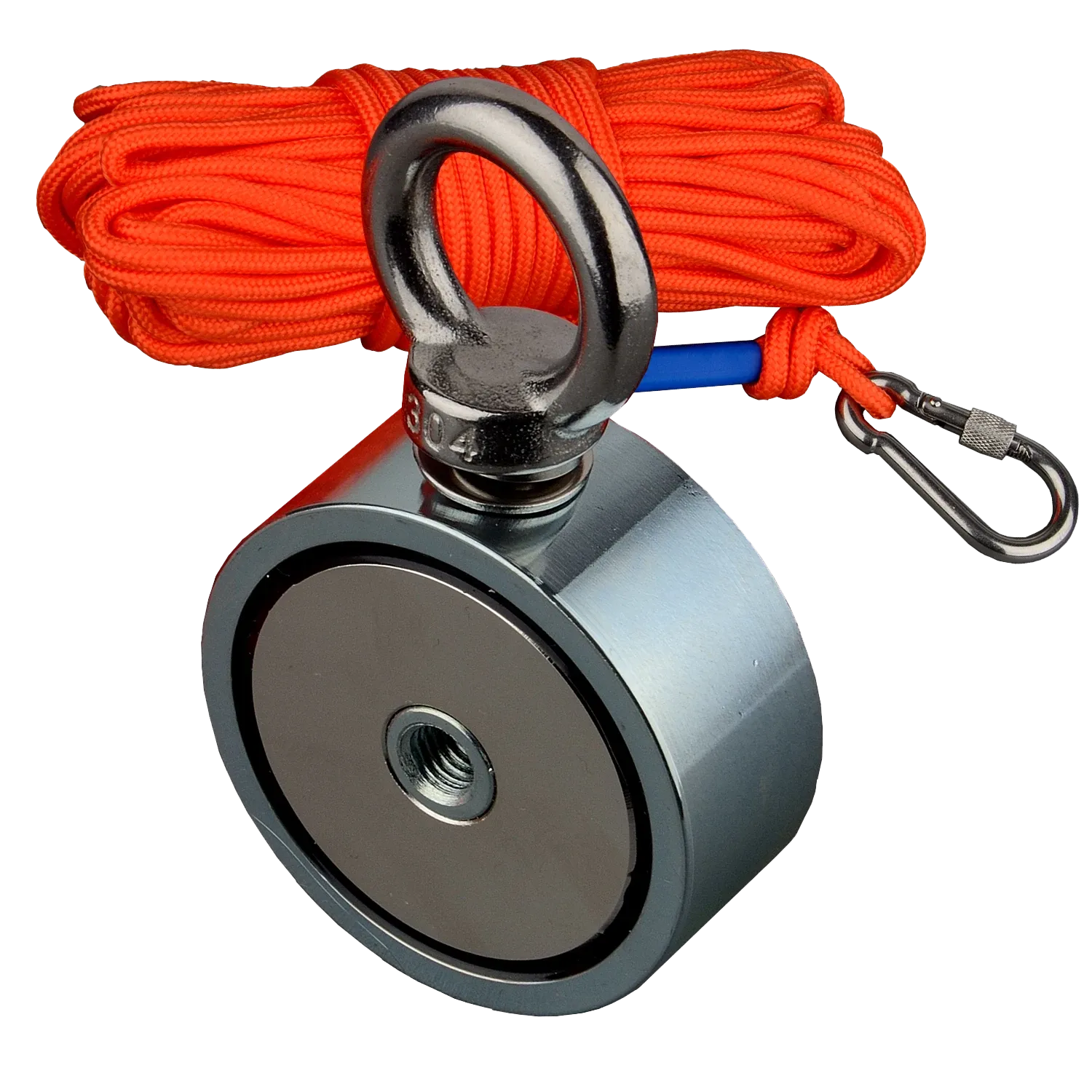
Why Choose Magnet Fishing?
The core excitement of magnet fishing lies in the unpredictability of each cast. Every time you drop your magnet into the water, you’re potentially moments away from recovering lost treasures or uncovering historical relics. Imagine pulling up items like old coins, jewelry, or even historical weapons that have been submerged for decades.
To maximize your success and ensure a rewarding experience, choosing the right magnet is crucial. We specialize in providing the highest quality neodymium magnets designed for optimal retrieval capabilities. Whether you’re searching for heavy metallic objects or delicate items that require a gentle touch, our magnets offer the perfect balance of strength and precision.
What interesting things you can find from Magnet Fishing
Frequently Asked Questions
What kind of magnet do you need for magnet fishing?
The best type of magnet for magnet fishing is a neodymium magnet, specifically known as a rare-earth magnet. These magnets are incredibly strong for their size and highly effective at attracting ferromagnetic materials. It would be best if you looked for a magnet that has a high pull force; generally, anything from 500 pounds (227 kilograms) of pull force is suitable for beginners, while more experienced magnet fishers might opt for magnets with pull forces exceeding 1,000 pounds (453 kilograms). It’s also recommended to use a double-sided magnet to increase your chances of catching items from all directions.
What are the best places to go magnet fishing?
Popular magnet fishing spots include bridges, docks, historic sites near water, and public access areas along waterways. These locations often yield a variety of finds, from tools and coins to larger historical artifacts.
What equipment do I need to start magnet fishing?
The basic equipment for magnet fishing includes a strong neodymium magnet, a sturdy rope, and protective gloves. Some enthusiasts also use a threadlocker to secure the magnet to the rope, and a grappling hook to retrieve larger items or those stuck in the mud.
How do I care for my magnet fishing equipment?
Proper care of your magnet fishing gear will extend its lifespan and performance. After each use, rinse the magnet and rope with fresh water to remove mud and debris, dry them thoroughly to prevent rust, and store them in a cool, dry place. Regularly check your equipment for wear and tear, especially the rope and the magnet’s attachment point.
What safety precautions should I take while magnet fishing?
Safety is crucial in magnet fishing. Always wear gloves to protect your hands from sharp objects, watch your footing on slippery banks, and be cautious about heavy items. It’s also advisable to magnet fish with a partner and inform someone about your location and expected return time.
Is magnet fishing illegal in Sweden?
As of the last update, magnet fishing is not broadly illegal in Sweden, but there are some local regulations and considerations to keep in mind. For instance, if you plan to magnet fish near historically significant sites, protected areas, or private properties, you might need a permit or could face restrictions. The Swedish Board of National Antiquities can impose fines for disturbing historical sites, so it’s crucial to research and possibly contact local authorities to ensure compliance with any regional laws or guidelines before you start magnet fishing.
